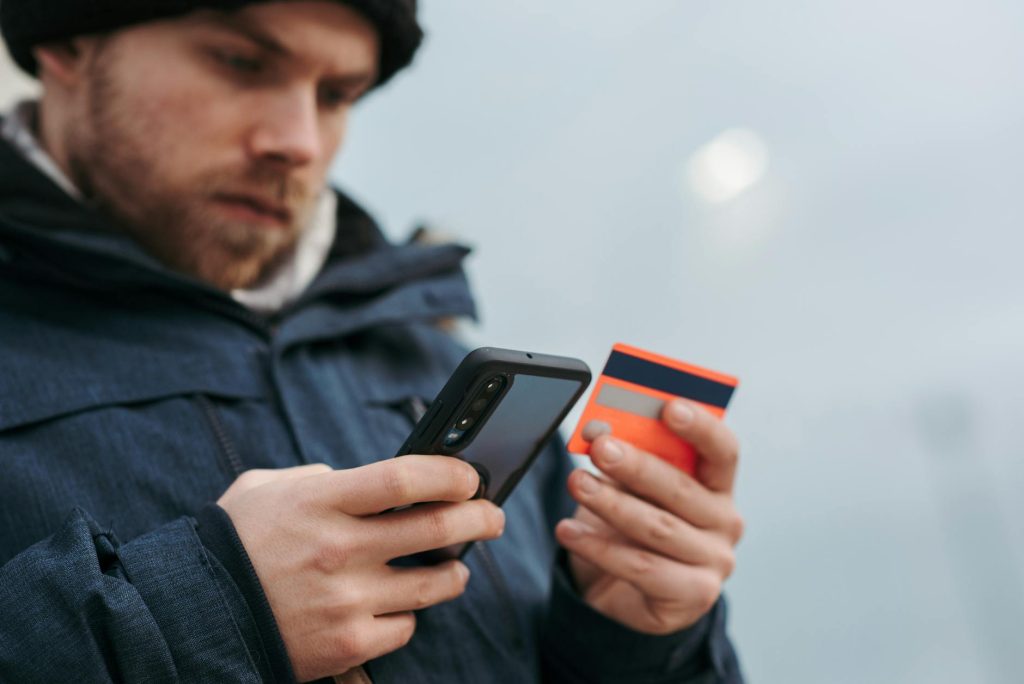A Coffee, a QR Code, and an Awkward Pause
Last December I ducked into Café Gato Tuerto near Parque Duarte, pulled out my phone, and aimed to pay with tPago—Dominican fintech pride since 2010. The barista beamed until my screen stalled on the verification page. She sighed the universal tech-is-acting-up sigh, then asked:
“¿Te sale el push? Si no, dale refresh y vuelve a escanear el código QR.”
The phrase te sale (“does it pop up for you?”) would never appear in a vanilla textbook, yet in that moment it was the difference between caffeinated bliss and fishing for crumpled coins.
A month later, in Medellín, I waved my phone at a supermarket cashier and mumbled, “¿Puedo pagar con código QR… de Nequi?” Her quick nod saved me a 3-hour bank line. Nequi now counts more than 20 million accounts—three of every five Colombian adults tropicanafm.com, and cashiers treat it like oxygen.
After a decade of Caribbean sun and Andean weekends, I’ve learned that mastering mobile-payment Spanish—not just the apps themselves—fast-tracks you from tourist to local in ten seconds flat. Let’s dive into the phrases, the cultural subtext, and the tech quirks you’ll meet at Dominican and Colombian cash registers.
Why Mobile Wallets Rule the DR & Colombia
Dominican e-commerce now leans on digital wallets for 58 % of online purchases, with tPago alone covering 40 % paymentscmi.com. Colombian adoption surged on a different axis: Davivienda’s Daviplata recently hit 18.5 million users qorusglobal.com, while Nequi records 33 % month-on-month transaction growth and tops 21 million users insights.ebanx.com.
For expats, the appeal is obvious:
- Speed over swipes: pesos land instantly; no foreign-card decline drama.
- Fee freedom: domestic QR payments dodge the 3 % “international purchase” surcharge many U.S. cards sneak in.
- Safety: flashing a phone feels safer at busy corners than counting bills.
Yet tech alone isn’t a magic wand. What unites barista, butcher, and bank clerk is language—precise and colloquial. Below, you’ll find the words they actually say.
Quick-Draw Vocabulary for the Checkout Counter
| Spanish Term | English Sense | In-Store Context | Memory Hook |
|---|---|---|---|
| Código QR | QR code | The black-and-white square to scan | Picture “code” + QR |
| Escanear | To scan | Action of reading the QR | Sounds like “scan” |
| Confirmación / push | Push-notification pop-up | Bank app asks you to confirm | They’ll say push aloud |
| Clave / PIN | Passcode | 4- to 6-digit code inside wallet | “Key” to release money |
| Saldo | Balance | Funds available in the wallet | “Salary” without the “r” |
| Comprobante | Receipt / confirmation | Digital slip after payment | Proof of purchase |
| Reverso | Refund / reversal | Cancelling mistaken charge | Reverse the flow |
| Recarga | Recharge / top-up | Adding money to wallet | Re-charge = recarga |
| Tarifa | Fee | Small charge for topping up | A tariff on usage |
| Sin contacto | Contactless | NFC tap with phone / watch | Literally “without contact” |
Conversation 1—TPago at a Santo Domingo Pharmacy
Scenario: I’m buying motion-sickness pills for a catamaran trip. My tPago app suddenly logs me out.
Cajera: ¿Va a pagar con tarjeta o tPago?
Yo: Con tPago, por favor… Un segundo, que no me sale la confirmación.
Cajera (amable, pero con fila detrás): Dale refresh y vuelve a escanear el código QR. Si no, prueba con tu PIN otra vez.
(Actualizo, entra la notificación, introduzco la clave.)
Yo: Listo, ya me salió el comprobante. Muchas gracias.
Cajera: Perfecto. ¡Feliz viaje!
English Translation
Cashier: “Will you pay with card or tPago?”
Me: “With tPago, please… One second, the confirmation isn’t popping up.”
Cashier (kind, but a line is forming): “Hit refresh and scan the QR code again. If not, try your PIN once more.”
(I refresh, the push appears, I enter my code.)
Me: “Done, I’ve got the receipt. Thanks a lot.”
Cashier: “Perfect. Safe travels!”
Conversation 2—Nequi in a Medellín Supermercado
Scenario: The cashier’s scanner is down; we need a workaround.
Cajero: El lector no funciona. ¿Tienes Nequi C2C? Te paso el número.
Yo: Claro. ¿Me dictas la línea?
Cajero: Es 314-555-2030. Al enviarlo, mándame el comprobante en pantalla.
(Envió 120 000 COP)
Yo: Listo, aquí está el pantallazo.
Cajero: Recibido. ¡Gracias por usar transferencia inmediata!
English Translation
Clerk: “The scanner’s down. Do you have Nequi peer-to-peer? I’ll give you the number.”
Me: “Sure. Can you read it out?”
Clerk: “It’s 314-555-2030. When you send it, show me the confirmation on the screen.”
(I send 120,000 COP)
Me: “Done, here’s the screenshot.”
Clerk: “Got it. Thanks for using instant transfer!”
How Top-Up Works—And the Spanish That Comes With It
Dominican banks link tPago to your checking account; topping up happens automatically per purchase. Ask a rep:
“¿El saldo se descuenta directo de mi cuenta corriente o tengo que hacer recarga previa?”
“Is the balance drawn straight from my checking account, or must I pre-load funds?”
In Colombia, Nequi lets you feed pesos via PSE (ACH pull) or partner ATMs. A teller may warn:
“La tarifa por recarga en efectivo es 6 % más IVA.”
“The fee for cash top-up is 6 % plus VAT.”
Cue the follow-up phrase:
“¿Hay forma de evitar la tarifa si recargo con tarjeta débito?”
“Is there a way to avoid the fee if I top up with a debit card?”
Table—Cashier Phrases vs. Bank-Desk Phrases
| Checkout Counter | What It Means | Bank Counterpart | What It Means |
|---|---|---|---|
| “¿Te salió el push?” | Did the confirmation pop up? | “¿Llegó tu SMS token?” | Did your one-time text code arrive? |
| “Muéstrame el comprobante.” | Show me the receipt | “Te enviamos el voucher al correo.” | We emailed the voucher |
| “Escanea el QR.” | Scan the QR | “Firma aquí para activar sin contacto.” | Sign to enable contactless |
| “Déjame hacerte el reverso.” | Let me reverse the charge | “Iniciaremos la devolución en 24 h.” | We’ll start the refund in 24 h |
| “Intenta con otra app.” | Try a different wallet | “Puedes agregar otra billetera.” | You can add another wallet |
Behind the Language: Dominican vs. Colombian Rhythm
- Dominican cashiers shorten everything. “Escanéalo” becomes “’scánealo,” “confirmación” truncates to “confirma.” Expect speed and endings that evaporate.
- Colombian cashiers slip in diminutives—“listico,” “una recarguita”—and soften requests with pues. If they say, “Mostrame el comprobante, pues,” it’s gentle, not pushy.
- In both countries, the English word “voucher” survives intact. So does “push.” Local tech culture loves code-switching.
Mini-Story—When Tech Combines With Trust
During 2023’s Carnaval in La Vega, I bought costume feathers from a street vendor who only took tPago. Mid-crowd the connection failed, yet he handed me the feathers anyway.
“Paga cuando te llegue la señal,” he shrugged.
Five minutes later, the app revived; I sent the pesos and yelled, “¡Ya te llegó!” He waved without checking his screen—trust cemented by a beep on his watch.
Colombia echoed that faith months later when a Medellín taxi driver let me Nequi him after I reached Wi-Fi. Mobile wallets, when paired with transparent language, build tiny bridges of reputation wherever you wander.
From Phone to Point-of-Sale—Key Real-World Reminders
I hesitate to spill a numbered “list,” but here are narrative mileposts that have saved my sanity:
Remember the 4-and-4 rule: Four things break — battery, data signal, app update, cashier scanner. Carry a power-bank, toggle mobile data, keep apps updated on Wi-Fi, and memorize at least one cashier’s phone number to send peer-to-peer if QR dies.
Screenshots soothe nerves: Latin American cashiers trust a screenshot of the comprobante even when their bank hasn’t pushed the alert yet. Practice capturing quickly (“pantallazo”).
Match wallet to country: In the DR, tPago is king; in Colombia, Nequi and Daviplata share the throne. Cashiers outside those ecosystems might stare blankly if you flash the wrong logo.
Mind the roaming OTP: If your U.S. SIM is dormant, the SMS token to register Nequi will never land. Borrow a local friend’s SIM or pick up a cheap prepaid chip first.
Fees hide in top-ups: topping Nequi with foreign Visa may trigger a tarifa of 3–4 %. But topping up via PSE from a Colombian bank is free.
Always ask for the reversal (reverso) before leaving: errors are easiest to fix while both parties share the same Wi-Fi and eye contact.
Flash Card—Rapid-Fire Phrases to Drill
| Goal | Spanish Phrase | English “Feel” |
|---|---|---|
| Request QR | “¿Tienen pago por QR?” | “Do you take QR payments?” |
| Ask for number | “Si el QR falla, ¿me das tu número Nequi?” | “If the QR fails, can you give me your Nequi number?” |
| Check charge | “¿Ya le salió la alerta?” | “Did the alert come through?” |
| Split bill | “¿Puedo enviar mitad a cada uno?” | “Can I send half to each of you?” |
| Verify balance | “¿Te llegó el saldo completo?” | “Did you get the full amount?” |
Stick these in your notes app, rehearse under the café table, and soon you’ll exchange pesos faster than you can say chip y pin.
Closing Thoughts—Language Is the Real Wallet
Phones glitch, but phrases persist. Master código QR, comprobante, reverso, recarga, saldo, and the next time you stand at a Caribbean colmado or an Andean café, you’ll watch locals nod with that half-smile reserved for insiders.
Mobile wallets didn’t erase cash culture; they layered new etiquette on top. Nail the words, respect the rhythm, and every beep, buzz, and blue check-mark becomes a tiny stamp on your expat passport—proof that home is where your phone clears a payment without awkwardness.
Hasta el próximo swipe.







